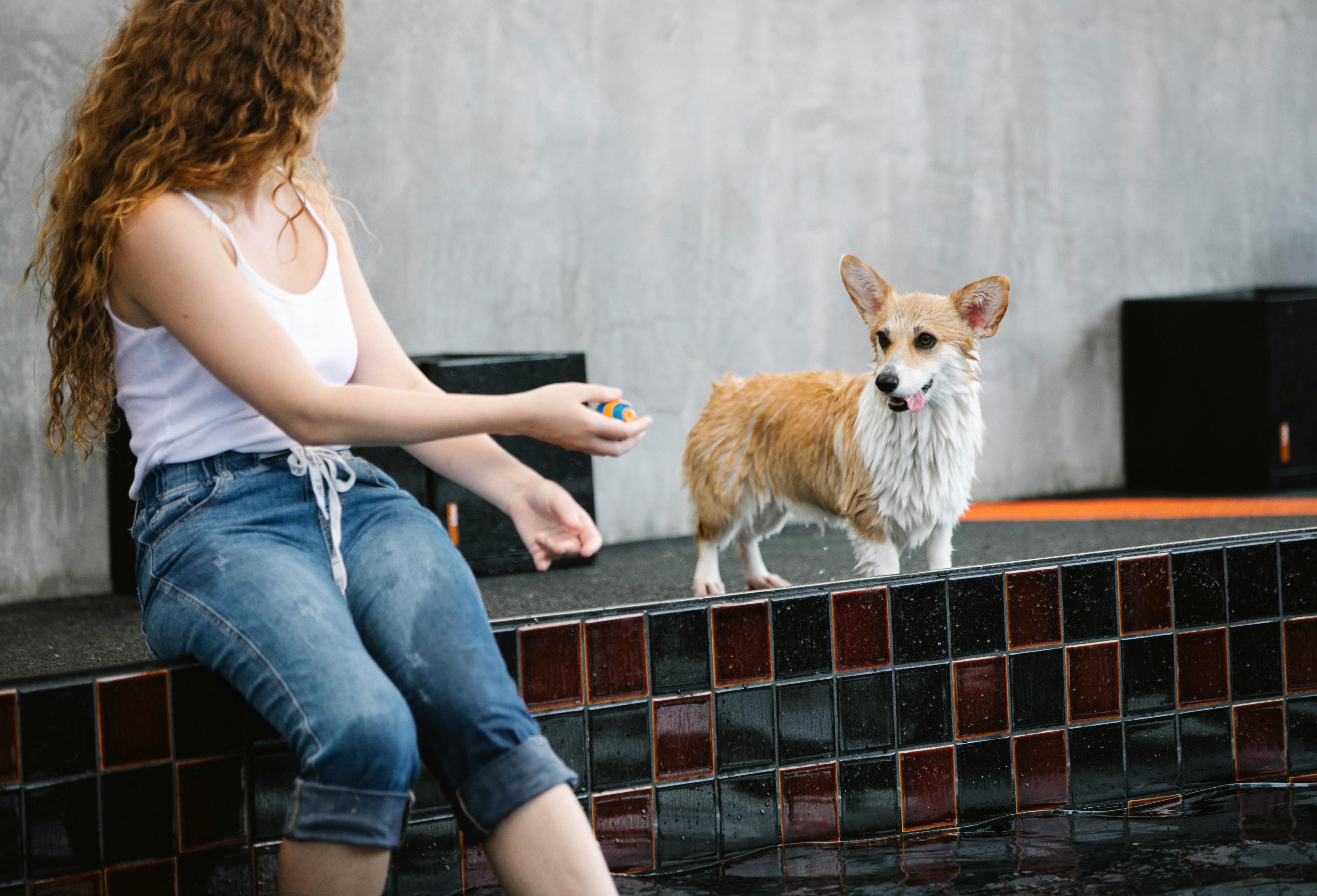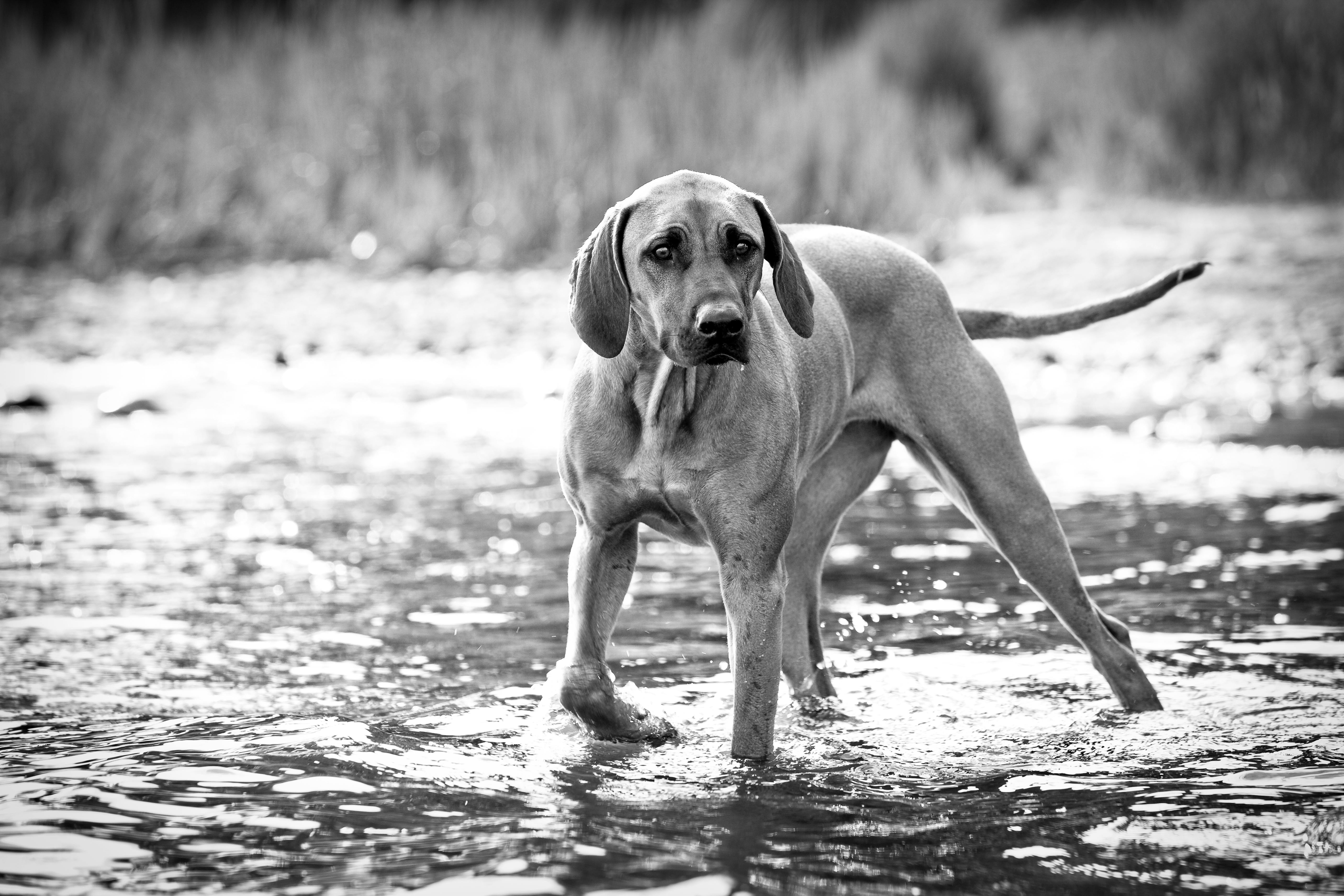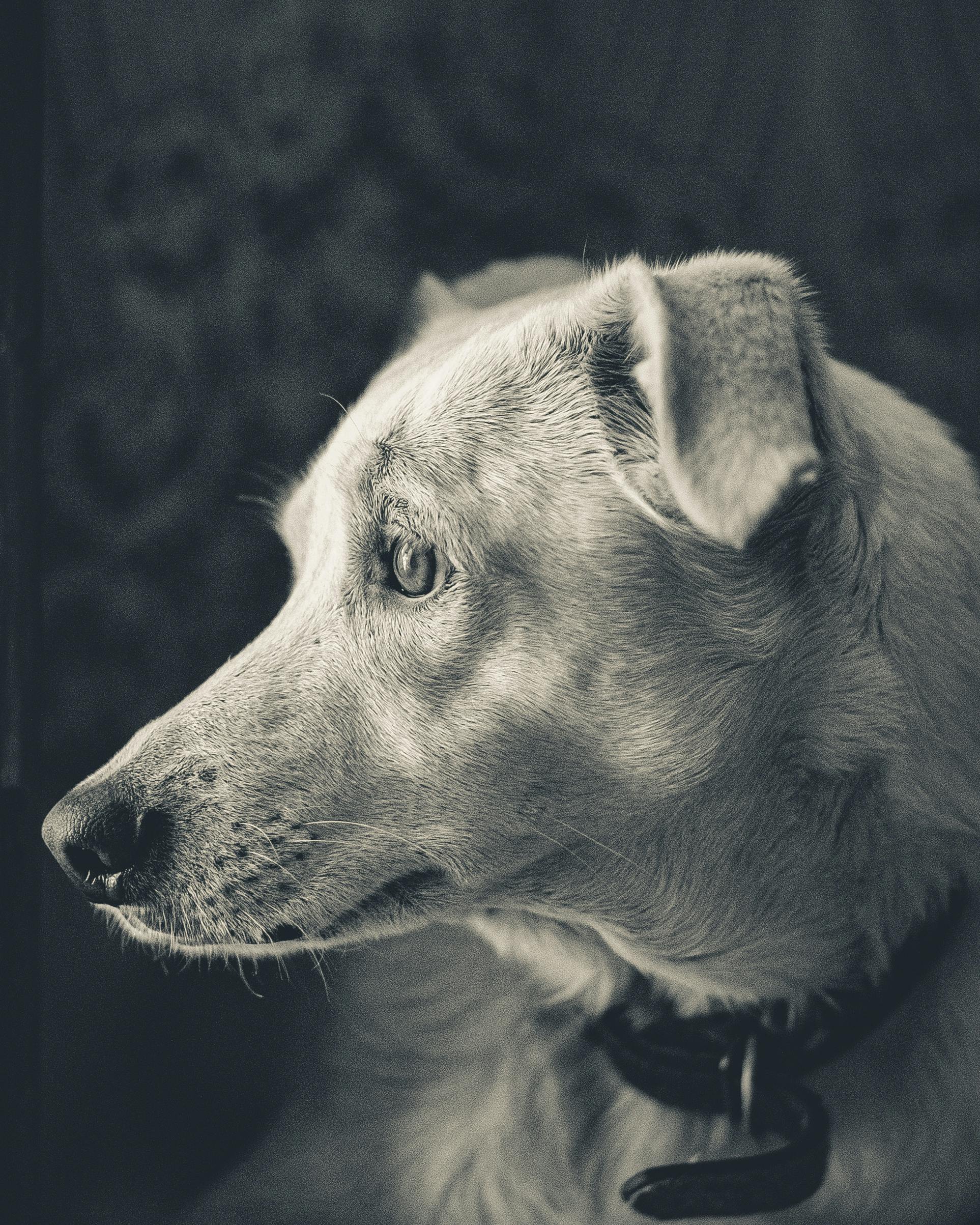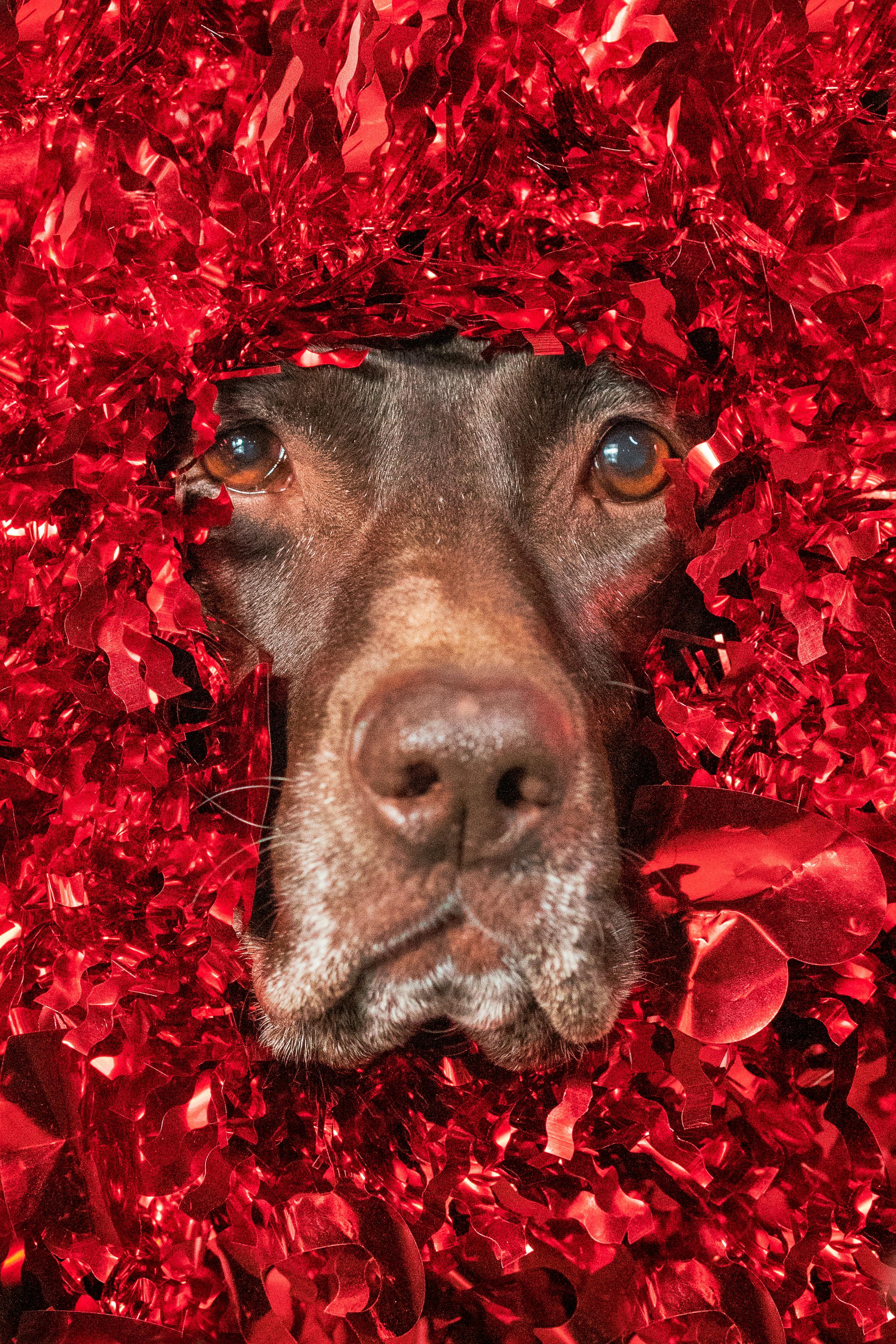Have you ever wondered why do dogs have wet noses? This intriguing question has puzzled pet owners and animal enthusiasts alike. Dogs’ noses are not just cute; they serve an important purpose. A dog’s wet nose is often a sign of health and vitality, but what really causes this phenomenon? In this blog post, we will uncover the fascinating truth behind those moist snouts. Is it just for cooling down, or does it play a role in their incredible sense of smell? You might be surprised to learn that a wet nose can also help dogs detect scents more effectively. But that’s not all—there are plenty of myths and misconceptions surrounding this topic. Why do some breeds have drier noses than others? Join us as we dive into the science and secrets of your furry friend’s nose health and discover the surprising benefits of those slippery little appendages. Whether you’re a curious dog owner or just love learning about animals, this exploration will satisfy your curiosity and deepen your understanding of your canine companion. Ready to find out more? Let’s dig deeper into the mysterious world of dog noses!
The Scientific Explanation: Why Do Dogs Have Wet Noses? Discover the Truth Behind This Canine Feature

Dogs are one of the most beloved pets worldwide, and have many unique features that makes them special. One of the most curious things about dogs is their wet noses. You may have asked yourself, “Why do dogs have wet noses?” Well, it turns out there’s a scientific explanation behind this canine characteristic that goes beyond just being cute.
The Biology of Dog Noses
The wetness of a dog’s nose is primarily due to a thin layer of mucus that helps with their sense of smell. Dogs have an incredibly well-developed olfactory system that allows them to detect scents far better than humans can. Their noses contain up to 300 million smell receptors, compared to humans’ mere 6 million. When a dog’s nose is wet, it helps to trap scent particles from the air, making it easier for them to smell. This is a crucial part of how they interact with their environment.
Why is Wetness Important?
Here’s a list of the reasons why having a wet nose is beneficial for dogs:
- Enhanced Smell: Wet noses help in capturing scent molecules effectively.
- Temperature Regulation: A dog’s nose also helps to cool down their body temperature. When their nose is moist, it can evaporate and cool them off.
- Health Indicator: A wet nose is often seen as a sign of a healthy dog. If a dog’s nose is dry or excessively warm, it might indicate an underlying health issue.
- Communication Tool: The moisture can also help in pheromone detection, which is important for communication between dogs.
Historical Insight into Dog Noses
Historically, dogs needed to rely on their senses for survival. This is especially true for breeds that were developed for hunting or herding. Over thousands of years, selective breeding has emphasized traits like a keen sense of smell, which is why we see such a variety of noses in different breeds today. Breeds like Bloodhounds and Beagles are particularly known for their incredible sniffing capabilities, and their wet noses play a significant role in their tracking skills.
How Wet is Wet?
You might wonder, what is considered a “normal” wetness for a dog’s nose? Here’s a little breakdown:
| Dog Nose Condition | Description |
|---|---|
| Normal Wet Nose | Moist and cool to the touch; able to trap scents effectively. |
| Dry Nose | Can be a sign of dehydration; monitor for other symptoms. |
| Warm Nose | May indicate fever or illness; check with a vet if persistent. |
Comparing Dog Noses to Other Animals
It’s interesting to compare dog noses with those of other animals. For instance, cats also have wet noses, but they may not rely on their noses to the same extent as dogs do. Here’s a quick comparison:
| Animal | Nose Type | Functionality |
|---|---|---|
| Dog | Wet & Cold | Excellent for scent detection |
| Cat | Wet & Cool | Good for scent, but less reliance |
| Human | Dry | Limited scent detection capabilities |
Practical Tips for Dog Owners
As a dog owner, it’s important to keep an eye on your pet’s nose. Here are some practical tips to ensure their nose stays healthy:
- Stay Hydrated: Make sure your dog drinks enough water, as dehydration can lead to a dry nose.
- Regular Vet Check-ups: Regular visits to the veterinarian can help catch any potential health issues early.
- Watch for Changes: If you notice sudden changes in your dog’s nose, such as excessive dryness or cracking, consult your vet.
Conclusion
So, why do dogs have wet noses? It’s a combination of biology, history, and a few practical benefits that make it an essential part of their anatomy. From enhancing their sense of smell to serving as a health indicator, wet noses play a crucial role in a dog’s life. Understanding these fascinating facts about canine noses can deepen your appreciation for your furry friend. Next time your pup greets you with a wet nose, you’ll know there’s more to it than just a simple greeting!
Top 5 Reasons Your Dog’s Nose is Wet: Understanding the Importance of Canine Nasal Moisture

When you think about your furry friend, have you ever wondered why dogs have wet noses? It’s one of those things that just seems normal, but there’s a lot of interesting reasons behind this canine characteristic! So let’s explore the top 5 reasons your dog’s nose is wet and understand the importance of their nasal moisture.
1. Temperature Regulation
One of the main reasons dogs have wet noses is to help regulate their body temperature. Dogs can’t sweat like humans do, so they rely on their noses to cool down. When a dog’s nose is wet, it helps to evaporate moisture, which cools them off. This is especially important during hot days when they are more prone to overheating.
- Dogs often pant to cool down, but a wet nose adds another layer to their cooling system.
- A warm nose might indicate that your dog is overheating or sick, so keep an eye on it!
2. Enhanced Smell
Did you know that a dog’s sense of smell is way better than a human’s? It’s true! A wet nose can actually improve a dog’s ability to smell. The moisture on their nose helps to capture scent particles. When these particles stick to the wet surface, it allows the dog to process smells more effectively. This is why dogs are such great hunters and why they can sniff out things that we can’t even imagine!
- Wet noses trap scent particles better than dry ones.
- Dogs have up to 300 million smell receptors compared to humans’ 5 million.
3. Natural Lubrication
The moisture on a dog’s nose is also a natural lubricant. It helps keep their nose healthy by preventing it from cracking or getting dry. Just like humans apply lotion to keep their skin moisturized, dogs benefit from having a wet nose. If you notice your dog’s nose is excessively dry, it can be a sign of dehydration or other health problems.
- A healthy dog’s nose should be moist and cool.
- If it’s too dry or cracked, consult your vet for advice.
4. Communication Tool
Believe it or not, a dog’s nose can also play a role in their communication. Dogs use their noses to gather information about their environment, including the scents of other animals or humans. When greeting other dogs, they often sniff each other’s noses to gather information about one another. So, a wet nose can be a sign that your dog is ready to interact and socialize!
- Nose sniffing is a dog’s way of saying “hello.”
- They can learn about other dogs’ health, mood, and even diet through smell.
5. Health Indicator
A dog’s nose can be a reflection of their overall health. A wet and cool nose often indicates that your dog is feeling fine, while a dry, warm nose might be a red flag. It’s not the only sign of health, but it can be a helpful indicator. If you notice changes in your dog’s nose, like excessive dryness or unusual discharge, you should consult with a veterinarian to rule out health issues.
- Monitor changes in your dog’s nose as part of regular health checks.
- A sudden change could indicate fever or illness.
Quick Summary of Reasons Why Dogs Have Wet Noses
- Temperature Regulation: Helps cool down the dog’s body.
- Enhanced Smell: Improves olfactory abilities.
- Natural Lubrication: Prevents cracking and dryness.
- Communication Tool: Assists in social interactions.
- Health Indicator: Reflects general well-being.
So, next time you pet your dog and feel their wet nose, remember all these fascinating reasons behind it! Their wet noses aren’t just cute; they serve important functions for their health and communication. Dogs are complex creatures with natural instincts that help them navigate their world, and understanding why they have wet noses is just another way to appreciate them more. Keep an eye on that nose, and you might just learn a little more about your furry friend every day!
Wet Noses vs. Dry Noses: What Your Dog’s Nose Says About Their Health and Emotions

Dogs are often considered man’s best friend, but did you ever stop to think about what their noses might be telling you? Wet noses vs. dry noses is a common topic among dog owners, and understanding the meaning behind these different nose conditions can give you insights into your furry friend’s health and emotions. So why do dogs have wet noses anyway? Let’s uncover the fascinating truth!
The Science Behind Wet Noses
First off, a dog’s nose is wet for a reason. The moisture helps enhance their sense of smell. Dogs have a remarkable olfactory system, and their sense of smell is thousands of times more sensitive than that of humans. The wetness on their nose helps capture scent particles in the air, making it easier for them to detect different smells.
- Nasal mucus: Dogs produce mucus that keeps their noses moist. This mucus acts like a sponge, soaking up scents.
- Cooling mechanism: A wet nose can also help cool down a dog’s body temperature. Dogs don’t sweat like humans do, so they rely on their noses to regulate their heat.
- Health indicator: A wet nose is typically seen as a sign of a healthy dog. However, it’s not always black and white.
What Does a Dry Nose Mean?
A dry nose on your dog can be caused by several factors. Sometimes, it’s just a result of the environment, like being in a warm room or after a long walk. But it might also indicate other issues. Here are some possible reasons for a dry nose:
- Dehydration: If your dog isn’t drinking enough water, their nose may dry out.
- Illness: Certain illnesses can cause a dog’s nose to become dry. For instance, fever or other infections.
- Allergies: Allergic reactions can lead to dryness or irritation on the nose.
- Weather conditions: Cold or windy weather can cause a dog’s nose to become chapped and dry.
Emotional States Reflected by Nose Conditions
Dogs express their emotions in various ways, and their noses can be part of that communication. A wet nose might signify a happy and relaxed dog, while a dry nose could indicate anxiety or stress.
Wet Nose:
- Happy and playful
- Excited or curious
- Content and relaxed
Dry Nose:
- Anxious or stressed
- Sick or unwell
- Overheated or tired
When to Seek Veterinary Help
While a wet or dry nose can provide clues about your dog’s health, it’s important not to rely solely on this indicator. If your dog’s nose is persistently dry or shows other signs of distress, it might be time to consult a vet. Here are some signs to watch for:
- Persistent dryness: If the dryness lasts more than a day or two.
- Cracking or bleeding: If you notice any cracks, or bleeding around the nose.
- Behavior changes: If your dog is lethargic, not eating, or showing signs of pain.
Fun Facts About Dog Noses
- Unique Nose Prints: Just like human fingerprints, each dog has a unique nose print. This uniqueness can be used for identification.
- Temperature Regulation: A dog’s wet nose helps to cool their body, which is very important during hot days.
- Scent Memory: Dogs can remember scents for years. A wet nose helps them retain these smells better.
Summary of Dog Nose Health Indicators
| Nose Condition | Possible Significance | Actions to Take |
|---|---|---|
| Wet Nose | Healthy, hydrated, happy | Keep monitoring, enjoy playtime! |
| Dry Nose | Potential health issue or stress | Check for other symptoms, see a vet |
| Cracked Nose | Dryness or injury | Apply pet-safe moisturizer, consult vet |
| Warm Nose | Possible fever or illness | Monitor temperature, visit vet if high |
Understanding your dog’s nose can be a window into their health and feelings. While wet noses are generally a good sign, it’s essential to stay observant of any changes. If you notice your dog’s nose becoming consistently dry or cracked, or if their behavior shifts, don’t hesitate to reach out to a veterinarian.
Your dog’s happiness and well-being depend on your attentiveness, so keeping an eye on that adorable wet nose can lead to a healthier and happier pet!
The Fascinating Role of a Dog’s Wet Nose: How It Enhances Their Senses and Interactions

Dogs are fascinating creatures, and one of their most interesting traits is their wet noses. Many people wonder, why do dogs have wet noses? It’s not just a quirky feature; it actually plays a crucial role in their sensory perception and interactions with the environment. Let’s dive into the captivating truth behind those damp snouts.
The Science Behind Wet Noses
Dogs’ noses are wet for a reason, it’s not just an accident of nature. The moisture on a dog’s nose comes from a combination of saliva and the secretion of mucus. This wetness serves several important functions:
- Enhanced Scent Detection: A wet nose helps dogs absorb scent particles more effectively. The moisture captures the scent and allows dogs to process it better, which is why their sense of smell is so powerful.
- Temperature Regulation: Dogs don’t sweat like humans do; instead, they rely on their noses to help cool down. The moisture evaporates from their noses which helps regulate their body temperature.
- Communication Tool: Dogs often use their noses to communicate with other dogs and animals. A wet nose can indicate excitement or curiosity.
Historical Context of Dog Noses
Historically, dogs have been companions to humans for thousands of years. The wet nose might have evolved as a trait that enhances their hunting skills. Here are some key points about dogs and their noses throughout history:
- Ancient Companions: Archaeological evidence suggests that dogs have been living alongside humans since at least 14,000 years ago.
- Hunting and Tracking: Early humans relied on dogs for hunting, and a keen sense of smell was crucial for tracking game. The wet nose could have been beneficial for this purpose.
- Working Dogs: In various cultures, dogs have been bred for specific tasks, including herding, hunting, and protecting. The sensitivity of their noses has always been a vital trait.
How Wet Noses Affect Interactions
The interactions between dogs and humans can be deeply influenced by the condition of a dog’s nose. Here’s how:
- Greeting Behavior: When a dog greets you with a wet nose, it’s often a sign of affection. Dogs tend to sniff intensely when they meet someone new, and a wet nose signifies an eager and curious friend.
- Health Indicators: A dry nose can sometimes indicate health issues. It’s important for dog owners to be aware of changes in their pet’s nose condition, which can signal dehydration or illness.
- Social Signals: Dogs communicate through scent and their wet noses play a big part in this. They can tell a lot about other dogs and people by simply sniffing.
Fun Facts About Dog Noses
Here are some fun and intriguing facts about dog noses:
- Dogs have about 300 million smell receptors in their noses, compared to a human’s 5 million.
- The unique pattern of a dog’s nose print is like a human fingerprint and can be used for identification.
- Dogs can detect certain medical conditions in humans, such as diabetes or cancer, due to their incredible sense of smell.
Comparisons: Dogs vs. Other Animals
When comparing dogs to other animals, their noses stand out. Here’s a quick look at how dog noses differ from those of other animals:
| Animal | Smell Receptors | Purpose of Nose Wetness |
|---|---|---|
| Dogs | 300 million | Enhanced scent detection, cooling |
| Cats | 50-80 million | Scent detection, less focus on cooling |
| Elephants | 2,000-3,000 | Scent detection, large surface area |
| Humans | 5 million | Limited scent detection, primarily for air intake |
Practical Tips for Dog Owners
Understanding the importance of a dog’s wet nose can help dog owners take better care of their furry friends. Here are some tips:
- Monitor Nose Condition: Regularly check your dog’s nose for changes. A wet nose is generally a sign of good health.
- Stay Hydrated: Make sure your dog has access to clean water, especially in hot weather. Hydration is essential for maintaining a wet nose.
- Vet Visits: If you notice a persistent dryness or other abnormalities in your dog’s nose, consult your veterinarian to rule out health issues.
With the rich history and scientific reasoning behind it, the wet nose of a dog captivates many. It is not just an adorable feature but serves important functions that influence how dogs experience the world. Understanding your dog’s unique traits can enhance your relationship and ensure their health and happiness. Embrace the wet nose; it’s a fascinating part of what makes dogs so special!
Can Wet Noses Indicate Illness? Learn When to Worry About Your Dog’s Nose Condition

Every pet owner knows that dogs are known for their wet noses. But have you ever wonder why? Or what it means if your dog’s nose is dry or changes in texture? Understanding the condition of your dog’s nose can reveal important clues about their health. So can wet noses indicate illness? Let’s dive into the fascinating world of canine noses and learn when to worry about your dog’s nose condition.
Why Do Dogs Have Wet Noses?
Dogs possess wet noses for several interesting reasons. One major function of the moisture on their noses is to help them smell better. The wetness helps trap scent particles, making it easier for their sensitive noses to detect various odors. It’s like a natural enhancement for their already impressive sense of smell.
Here are some key points about why dogs have wet noses:
- Enhanced Scent Detection: The moisture captures scent particles, which makes it easier for dogs to smell things.
- Cooling Mechanism: Dogs don’t sweat like humans do. Their noses help regulate body temperature.
- Health Indicator: A wet nose can suggest good health, but changes may indicate problems.
Can Wet Noses Indicate Illness?
Generally, a wet nose is a sign of a healthy dog, but it’s not always the case. There are situations when you should start worry. If your dog’s nose becomes excessively dry, cracked, or changes in color, it may signal an underlying health issue. It’s best to consult a veterinarian if you notice these changes.
Here’s a list of potential issues related to nose conditions:
- Dehydration: A dry nose could mean your dog is not drinking enough water.
- Infections: Infections can lead to crusty or dry noses.
- Autoimmune Disorders: Some diseases can affect the moisture level of the nose.
- Allergies: Environmental allergies may cause nasal irritation.
When to Worry About Your Dog’s Nose Condition
Knowing when to seek medical advice is crucial. Here are some signs that may indicate your dog’s nose condition requires attention:
- Cracked or Bleeding Nose: This can signal serious dehydration or injury.
- Persistent Dryness: If your dog’s nose stays dry for an extended period, it might be a sign of illness.
- Discoloration: Any change in the color of the nose can suggest a health problem.
- Nasal Discharge: If you see unusual discharge, it’s time to check with a vet.
It’s important to keep an eye on your dog’s behavior along with their nose condition. Changes in appetite, energy levels, or excessive licking of the nose can also be significant indicators of health.
Fascinating Facts About Dog Noses
Dog noses are truly remarkable. Did you know a dog’s sense of smell is estimated to be 40 times better than that of a human? Let’s look at some more fascinating facts:
- Unique Nose Prints: Just like human fingerprints, every dog has a unique nose print that can be used for identification.
- Temperature Regulation: Wet noses help dogs cool down since they don’t sweat like humans.
- Scent Memory: Dogs can remember scents for a long time, which is why they can recognize their owners even after long periods.
Historical Context of Dog Nose Understanding
The understanding of dog noses has evolved over centuries. In ancient times, dogs were primarily breed for hunting, and their wet noses were seen as crucial for tracking scents. Over the years, as dogs became companions, people began to realize that a dog’s nose could also reflect their overall health.
During the 19th century, veterinarians started to emphasize the importance of nose condition as part of general health assessments. Today, many pet owners are aware of the significance of their dog’s nose condition, but the knowledge is still growing.
Practical Tips for Monitoring Your Dog’s Nose
To keep an eye on your dog’s health, here are some practical tips:
- Regular Check-ups: Make sure to schedule regular vet visits for your dog.
- Hydration: Encourage your dog to drink enough water, especially in hot weather.
- Observe Behavior: Pay attention to any changes in behavior, appetite, or mood.
By understanding why dogs have wet noses and what changes to look for, you can become a more informed and proactive pet owner. Remember that while a wet nose is generally a sign of health, it’s essential to monitor any changes closely and consult with a veterinarian when necessary. So keep an eye on that adorable little nose and ensure your furry friend stays healthy and happy!
Unveiling the Myths: Do Wet Noses Really Mean Dogs are Happy? Find Out Now!

Dogs are often referred to as “man’s best friend,” and their wet noses have long been associated with their emotions. But does a wet nose really mean a dog is happy? Many people has been led to believe that a moist snout is a sign of joy and health, but the reality is more complex than that. In this article, we dive deep into the myths surrounding wet noses, why do dogs have wet noses, and what it truly means for our furry companions.
The Science Behind Wet Noses
First, let’s explore why do dogs have wet noses. Dogs have unique physiology that contribute to the moisture of their noses. The primary reason for this wetness is due to a thin layer of mucus that helps them detect scents better. This mucus, combined with the moisture that comes from the air, keeps their snouts cool and enhances their sense of smell, which is crucial for their survival and interaction with their environment.
The Myths Surrounding Wet Noses
There are several common myths about wet noses in dogs. Let’s break down a few of them:
Myth 1: A Wet Nose Means a Happy Dog
Many people believes that a wet nose is synonymous with happiness. While some dogs might have wet noses when they are relaxed or content, it does not necessarily mean they are happy all the time.Myth 2: A Dry Nose Means a Sick Dog
It’s frequently thought that if a dog’s nose is dry, it must be sick. However, dogs can have dry noses for many reasons, such as sleeping, being in a warm environment, or even just their breed characteristics.Myth 3: All Dogs Have Wet Noses
Not all dogs have the same level of moisture on their noses. Breeds like Bulldogs or Pugs may have drier noses compared to Greyhounds or Retrievers.
Historical Context of Dog Noses
Historically, dogs have been domesticated for thousands of years. The wet nose serves as a tool for survival, not just a sign of well-being. Ancient hunters relied on dogs for tracking and hunting, making their sense of smell vital. Over time, humans also trained dogs for companionship, leading to the emotional connections we see today.
Why Do Dogs Have Wet Noses? Uncover The Fascinating Truth!
So, why do dogs have wet noses beyond scent detection? Here are some additional reasons:
Temperature Regulation: Wet noses help dogs maintain their body temperature. By keeping their noses moist, they cool down through evaporation, much like how sweating works for humans.
Health Monitoring: A dog’s nose can indicate its health status. While a healthy dog usually has a wet nose, other indicators like activity level, appetite, and behavior must also be considered.
Communication: Dogs use their noses to communicate and interact with others. A wet nose can be an invitation for pets and cuddles or a sign of curiosity.
Practical Examples and Observations
Owners often notice changes in their dog’s noses throughout the day. Here are some observations:
After Playtime: You might see your dog’s nose is very wet after they’ve been running around. This is because they are panting, and moisture accumulates on their nose during this time.
When Relaxing: If your dog is laying down for a nap, their nose may dry out a bit. This is completely normal and doesn’t indicate any health issues.
During Illness: If you notice your dog’s nose is unusually dry and cracked, alongside other symptoms like lethargy or loss of appetite, it might be time to consult a vet.
Understanding Your Dog’s Nose
Here’s a quick table to summarize what different nose conditions might indicate:
| Nose Condition | Potential Meaning | Action to Take |
|---|---|---|
| Wet and Cool | Happy and healthy | Continue monitoring |
| Warm and Dry | Possible dehydration or illness | Ensure hydration, watch closely |
| Dry and Cracked | May indicate health issues | Consult a veterinarian |
| Normal Moisture | Healthy and normal | Regular vet check-ups |
While dog noses can tell us a lot, they are not the only indicators of a dog’s health or happiness. Observing your dog’s overall behavior and well-being is crucial. Remember to give them plenty of love and attention, regardless of whether their noses are wet or dry. The bond you share with your furry friend is what truly matters.
Exploring the Link Between Wet Noses and Dog Behavior: What Your Pup Is Trying to Tell You

Dogs are often known as man’s best friend, and one of the many charming features of them is their wet noses. But why do dogs have wet noses? This question might seem trivial at first, but the truth is, there’s a fascinating link between a dog’s wet nose and its behavior that can provide insight into what your furry friend is trying to communicate.
The Science Behind Wet Noses
A dog’s nose is not just adorable; it serves important functions. The wetness of a dog’s nose is largely due to a thin layer of mucus. This moisture helps to enhance their sense of smell, which is already significantly superior to that of humans. There are some interesting facts regarding why their noses are wet:
- Enhanced Smell: The moisture on a dog’s nose helps to capture scent particles, making it easier for them to identify and distinguish different smells.
- Temperature Regulation: Dogs also use their noses to help regulate their body temperature. When a dog pants, the moisture evaporating from their nose can help cool them down.
- Communication: Dogs often use their noses to communicate with each other. A wet nose can indicate excitement or curiosity, and it is often a way for them to greet other dogs or humans.
Historical Context of Dog Noses
Historically, dogs have been companions to humans for thousands of years. Their wet noses have always played a crucial role in their interactions with the environment and with us humans. Ancient civilizations valued dogs not just for their companionship, but also for their hunting abilities, and a keen sense of smell was vital for this purpose.
What Your Dog’s Wet Nose Might Be Telling You
Understanding your dog’s behavior can be complex, but observing their wet nose can provide clues. Here’s what to consider:
- Excitement: When dogs are excited, their noses often become wetter. This is a signal of their eagerness to engage or play.
- Nervousness: Interestingly, a dog might have a wet nose when they are nervous or anxious. The adrenaline can cause increased moisture.
- Health Issues: Sometimes, a dry nose can indicate health problems. If your dog usually has a wet nose and it suddenly becomes dry, it might be worth consulting a vet.
Comparing Wet and Dry Noses
Here’s a simple comparison between wet and dry dog noses:
| Feature | Wet Nose | Dry Nose |
|---|---|---|
| Smell Ability | Enhanced, captures scent particles | May indicate reduced smell ability |
| Temperature | Helps cool the body | No cooling effect |
| Health Indicator | Generally healthy | Could signal dehydration or illness |
The Role of Environment
The environment can also impact the wetness of a dog’s nose. For example, during hot weather, a dog’s nose may dry out because they are sweating less. Conversely, in humid conditions, the moisture can increase.
Practical Examples of Nose Behavior
Let’s look at some practical examples to consider:
- Greeting Behavior: When you come home, does your dog greet you with a wet nose? This is often a sign of affection and excitement.
- Curiosity: If your dog is sniffing around a new area and has a particularly wet nose, it could be that they are gathering information about their surroundings.
- Calmness: A dog that is resting with a moderately wet nose is often comfortable and relaxed.
In addition, you might notice that different breeds have varying nose moisture levels. Breeds like the Labrador Retriever tend to have consistently wet noses, while others may not, depending on their environmental factors and overall health.
When it comes to understanding the fascinating truth behind why dogs have wet noses, it’s clear that it’s not just a quirky trait. It’s deeply linked to their behavior, health, and communication methods. Observing this single feature can lead to greater insights into your dog’s feelings and needs, helping foster a deeper bond between you and your furry friend.
So next time you pet your pup and feel that wet nose, remember it’s more than just adorable. It’s a window into their world, one that’s rich with emotions, signals, and health indicators. Embrace the knowledge and enjoy the journey with your canine companion!
Why Do Certain Breeds Have Wetter Noses? A Deep Dive into Canine Anatomy and Variation

Dogs are fascinating creatures, and one of the most interesting things about them is their wet noses. But have you ever wondered why do certain breeds have wetter noses than others? Is it just a random genetic quirk, or does it serve a specific purpose? In this article, we’ll explore the anatomy of canine noses, variations among different breeds, and the reasons behind that delightful moisture.
The Anatomy of a Dog’s Nose
A dog’s nose is not just for show. It’s a complex organ that plays a crucial role in their sense of smell. The wetness of a dog’s nose can be attributed to several factors, including:
- Mucus Production: Dogs secrete mucus from their nasal passages, which helps to trap scents and enhance their sense of smell.
- Cooling Mechanism: The moisture on a dog’s nose helps to cool them down. Dogs don’t sweat like humans do, so they rely on wet noses to regulate their body temperature.
- Sensory Receptors: A wet nose can enhance a dog’s ability to pick up scents. It is believed that the moisture helps to dissolve scent particles, making it easier for dogs to detect odors.
Breed Differences in Nose Wetness
Various breeds exhibit different levels of nose wetness. Some breeds are known for having perpetually damp noses while others might have drier noses. Here are some breeds that are commonly noted for their wet noses:
- Labrador Retrievers: These friendly dogs often have moist noses, which is a sign of good health.
- Beagles: Known for their incredible sense of smell, Beagles typically have very wet noses too.
- Bulldogs: Interestingly, Bulldogs may have drier noses, which might be due to their unique facial structure.
Factors Influencing Nose Moisture
There are multiple factors that can influence how wet a dog’s nose is, including:
- Health Status: A healthy dog usually has a moist nose. If a dog has a dry nose, it could be a sign of dehydration or illness.
- Environmental Conditions: Weather can impact nose moisture. Hot, dry days can lead to drier noses, while humid days can keep them moist.
- Age: Puppies often have wetter noses compared to older dogs. As dogs age, their noses may become drier.
Fun Facts About Dog Noses
Did you know that a dog’s nose print is as unique as a human fingerprint? Here are some more fun facts about dog noses:
- Dogs have about 300 million smell receptors, while humans have about 6 million.
- The size and shape of a dog’s nose can influence their sense of smell. Breeds with longer noses tend to have a better sense of smell than flat-faced breeds.
- Dogs can detect certain diseases, including diabetes and cancer, through their sense of smell, which is often aided by their wet noses.
Why Do Dogs Have Wet Noses?
So, why do dogs have wet noses? The answer is a combination of evolutionary adaptation and physiological necessity. Here’s a brief outline of the main reasons:
- Enhanced Smell: Moisture helps to capture scent particles, improving their olfactory capabilities.
- Cooling: Wet noses help regulate a dog’s body temperature.
- Health Indicator: A wet nose is often a sign of a healthy dog, whereas a dry nose could indicate issues.
Comparison of Nose Wetness Among Breeds
Here’s a simple table comparing nose wetness among various dog breeds.
| Breed | Nose Wetness Level |
|---|---|
| Labrador Retriever | High |
| Beagle | High |
| Bulldog | Low |
| German Shepherd | Moderate |
| Poodle | Moderate |
Caring for Your Dog’s Nose
Maintaining your dog’s nose health is essential. Here are some tips:
- Hydration: Make sure your dog drinks plenty of water, especially in hot weather.
- Regular Check-ups: Monitor your dog’s nose during vet visits and consult if you notice any significant changes.
- Protection: In extreme weather, consider using nose balms or creams for breeds prone to dryness.
Understanding why do dogs have wet noses can enhance your appreciation for these beloved pets. Their moist noses are not just cute; they’re vital to their health and well-being. Each breed has its unique traits, and examining these variations can deepen our bond with our canine companions. So next time you see that wet nose, remember, it’s more than just an adorable feature—it’s a fascinating part of their anatomy and biology.
The Connection Between Temperature and Wet Noses: How Weather Affects Your Dog’s Nose

Isn’t it fascinating how our furry companions have these wet noses? Ever wondered why that is? The connection between temperature and wet noses is more than just a quirky trait of dogs. Weather affects every aspect of their lives, including the moisture on the tip of their snouts. Let’s take a closer look at the reasons behind those lovable wet noses and how they relate to temperature and climate.
Why Do Dogs Have Wet Noses?
Dogs possess wet noses for several reasons. The moisture is not just for show, but it serves important functions. Here’s a breakdown of some of the main reasons:
Enhanced Sense of Smell: Dogs have an incredible sense of smell, estimated to be anywhere from 10,000 to 100,000 times more sensitive than humans. A wet nose helps to capture scent particles from the air, improving their ability to detect odors.
Thermoregulation: Dogs don’t sweat like humans. Instead, they cool off primarily through panting and by the moisture on their noses. A wet nose helps to regulate their body temperature, particularly during warmer weather.
Health Indicator: The state of a dog’s nose can also be an indicator of their health. A healthy nose is typically cool and moist. If a dog’s nose is dry or warm, it might signal an underlying health issue.
The Relationship Between Weather and Nose Moisture
The weather plays a significant role in how wet or dry a dog’s nose might be. In humid conditions, noses tend to be wetter, while in dry or windy weather, they can become drier. Here’s how different weather conditions affect your dog’s nose:
Hot Weather: On hot days, a dog’s nose may dry out as they pant and lose moisture. Keeping them hydrated is crucial to prevent excessive dryness.
Cold Weather: In colder months, the air can be dry, and your dog’s nose might also lose moisture. Sometimes, you might notice cracking or flaking skin around the nose.
Humidity: In high humidity, dogs’ noses often stay wetter because the moisture in the air helps keep their noses moist.
Why Does Nose Moisture Matter?
Understanding the moisture levels on your dog’s nose can help you monitor their overall health. Here are some signs that indicate you should pay attention to:
Consistently Dry Nose: If your dog’s nose is often dry, it might be a sign of dehydration or even illness.
Crusty or Cracked Nose: This can indicate skin conditions or allergies.
Excessive Moisture: While a wet nose is normal, excessive moisture could point to nasal infections or other health issues.
The Science Behind Wet Noses
It’s interesting to note that many mammals have wet noses, but dogs are particularly known for it. Here’s a bit of historical context:
Evolutionary Advantage: The wet nose trait is believed to have evolved to assist in hunting. A moist surface would better trap scents, making it easier for canines to track prey.
Genetic Factors: Different breeds may have varying levels of moisture on their noses due to genetic factors. For instance, brachycephalic breeds like Bulldogs may have less moisture due to their facial structure.
Tips for Maintaining Your Dog’s Nose Health
To ensure your dog’s nose stays healthy, consider these simple tips:
Hydration: Always provide fresh water, especially during warm weather. This helps maintain moisture levels.
Humidifiers: If you live in a dry climate, using a humidifier can help your dog’s nose stay moist.
Regular Check-ups: Routine veterinary visits can catch any potential health issues early.
Nose Balm: If your dog has a particularly dry nose, consider using a pet-safe nose balm to keep it moisturized.
Conclusion
The connection between temperature and a dog’s wet nose is a fascinating aspect of their biology. By understanding why dogs have wet noses and how weather influences them, you can better care for your furry friend. Keeping an eye on their nose can provide valuable insight into their health and well-being. So, the next time you see that adorable wet nose, remember there’s a lot more going on beneath the surface!
Fun Facts About Dog Noses: Surprising Insights That Will Change How You See Your Pet!

When you think about your furry friend, have you ever wondered why their noses is wet? Or maybe you just want to know some fun facts about dog noses that could change how you see your pet? Those little snouts are more than just cute — they’re packed with surprises! Let’s dive into some fascinating insights about dog noses and discover why they’re such a critical part of your pooch’s anatomy.
Why Do Dogs Have Wet Noses?
Dogs have wet noses for a couple of reasons, and it’s actually a bit fascinating. A dog’s nose is a special organ that helps them with their sense of smell, which is much better than ours. It turns out, the moisture on a dog’s nose helps them detect scents better. It do this by trapping scent particles in the air, making it easier for their incredible olfactory system to pick them up.
Moreover, wet noses also help dogs regulate their body temperature. When a dog pants, the moisture on their nose evaporates, which cools them down. So, next time you see your pup with a shiny, wet nose, you can appreciate it’s not just for show. It’s a vital part of how they interact with the world!
Fun Facts About Dog Noses
Here’s a list with some cool facts about dog noses that you might not know:
Unique Patterns: Just like human fingerprints, every dog has a unique nose print. They can be used to identify dogs, much like a fingerprint does for humans.
Sensitive Snouts: A dog’s sense of smell is anywhere from 10,000 to 100,000 times more acute than humans. This means they can detect scents at incredibly low concentrations.
Color Matters: The color of a dog’s nose can provide hints about their health. Darker noses usually indicate a healthy dog, while a lighter nose may indicate certain genetic conditions or health issues.
Nasal Folds: Dogs have intricate folds and ridges inside their noses that increase the surface area for scent detection. This anatomical feature is crucial for their hunting and tracking abilities.
Smell Memory: Dogs have an excellent sense of smell memory. They can remember scents for years, which is why they often recognize their humans or other animals even after a long time apart.
Historical Context of Dog Noses
Historically, dogs have been bred for various purposes, including hunting, herding, and companionship. Their sense of smell has been especially prized. The bloodhound, for instance, is known for its incredible tracking ability, thanks to its highly developed nose. In fact, bloodhounds can follow a scent trail that is days old!
Moreover, dogs have been used in search and rescue missions, drug detection, and even in detecting certain medical conditions in humans. Their noses have been a valuable asset throughout history, helping humans in ways we may not even realize.
Comparison: Dog Noses vs. Human Noses
Let’s break it down further with a simple comparison between dog noses and human noses:
| Feature | Dog Nose | Human Nose |
|---|---|---|
| Sense of Smell | 10,000 to 100,000 times stronger | Less sensitive |
| Unique Patterns | Unique nose prints | No unique identification |
| Moisture | Helps with scent detection | Less moisture |
| Temperature Regulation | Evaporation cools body | No significant role |
Practical Examples of Dog Nose Uses
Search and Rescue: Dogs can find lost people in disaster situations, thanks to their keen sense of smell.
Medical Detection: Some dogs are trained to detect illnesses like cancer or diabetes by smelling changes in a person’s body.
Therapy Work: Dogs with a great sense of smell can also be used in therapy settings, helping to calm patients with their presence.
Caring for Your Dog’s Nose
Keeping your dog’s nose healthy is important too! Here are some tips:
Hydration: Make sure your dog has access to fresh water, as hydration helps maintain the moisture on their nose.
Avoid Irritants: Keep your dog away from harsh chemicals or irritating substances that can dry out their nose.
Regular Vet Check-ups: Any changes in the appearance or texture of your dog’s nose should be discussed with a vet to rule out health issues.
Understanding the quirks of your dog’s nose can help you appreciate your pet even more. Next time you give your pup a pat, take a moment to marvel at that little wet nose and all the incredible things it does!
Conclusion
In conclusion, the wet noses of dogs serve several important functions that contribute to their overall health and well-being. We explored how a moist nose helps with temperature regulation, enhances their sense of smell, and offers insights into their emotional state. The wetness of a dog’s nose is primarily due to the secretion of mucus, which aids in trapping scent particles, making their already remarkable olfactory abilities even more acute. Additionally, while a wet nose is often associated with a healthy dog, it’s essential to monitor any changes, as they can indicate health issues. So, the next time you give your furry friend a gentle pat on the head, take a moment to appreciate the science behind that wet nose. Consider sharing your newfound knowledge with fellow pet owners or even conducting your own observations to better understand your dog’s unique behaviors.

